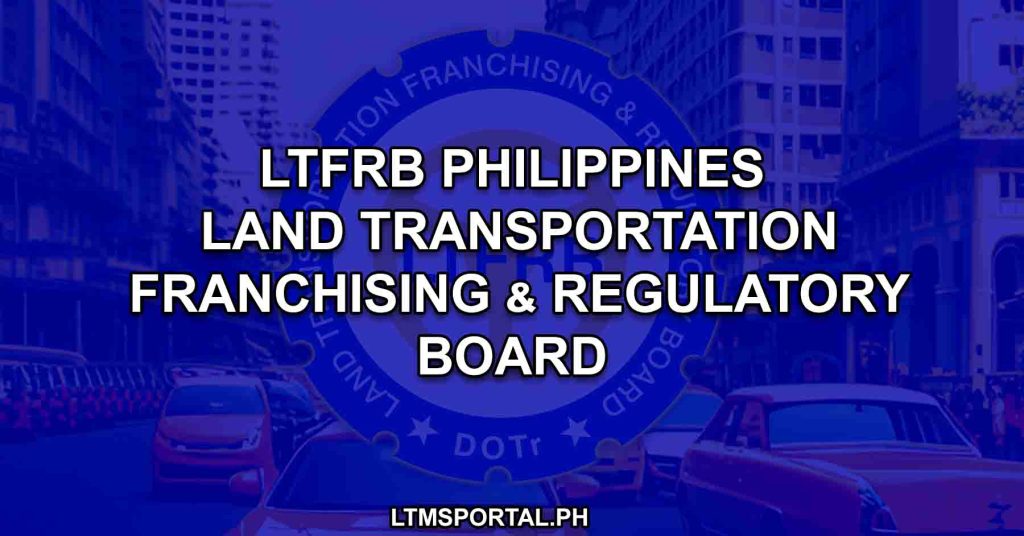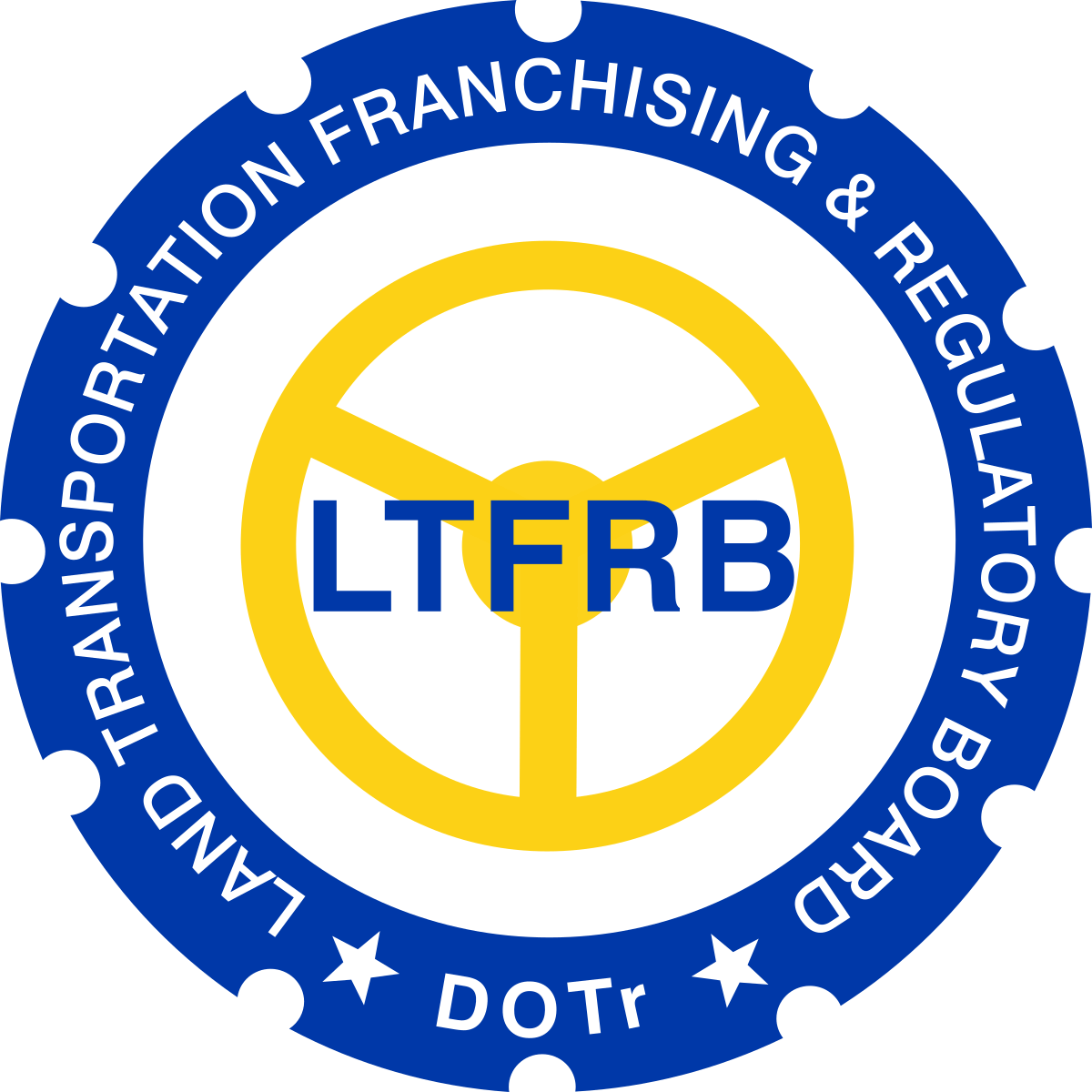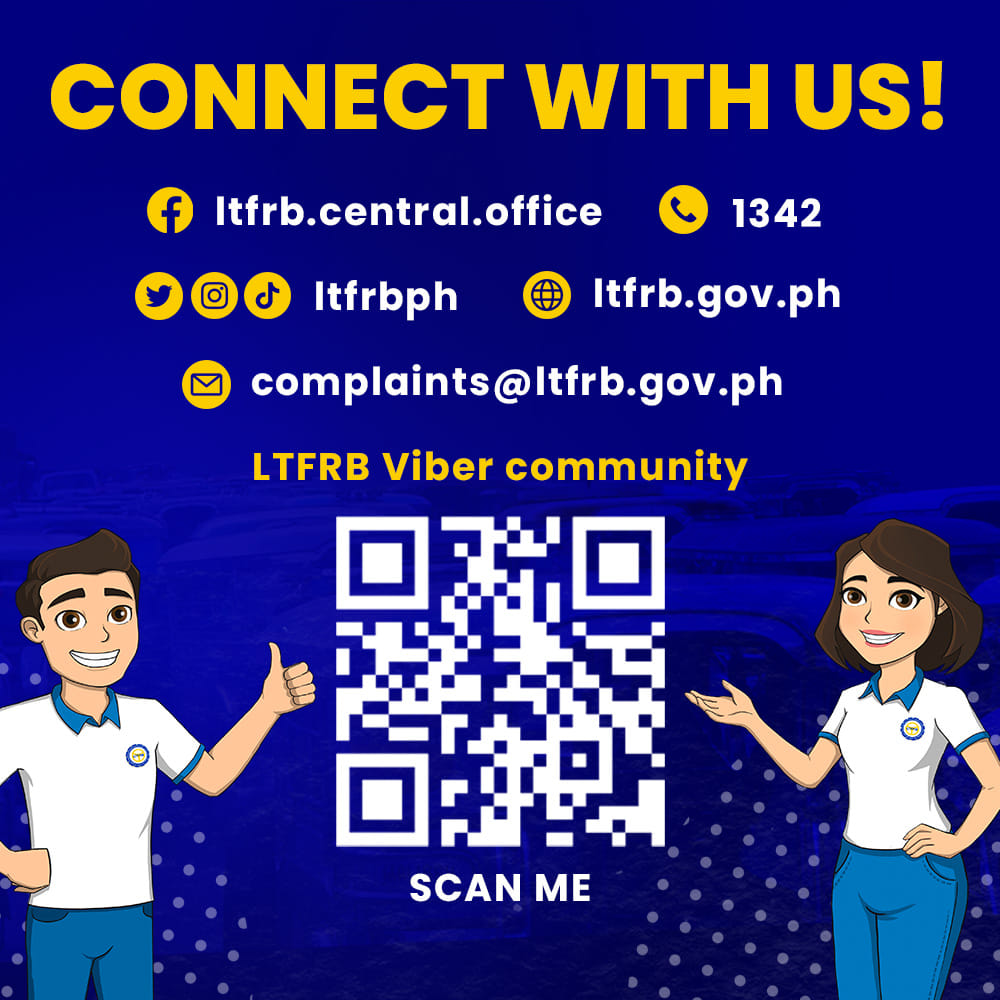The Land Transportation Franchising and Regulatory Board (LTFRB) is a regulatory agency created by Executive Order No. 202 on June 19, 1987. It operates as an attached agency of the Department of Transportation (DOTr), which was formerly known as the Department of Transportation and Communications (DOTC).
While the Land Transportation Office (LTO) is in charge of all matters relating to land transportation, from driver’s licensing, vehicle registration, law enforcement, and more, the LTFRB primarily focuses on promulgating, administering, enforcing, and monitoring compliance of policies, laws, and regulations of public land transportation services. Together, these two distinct entities, the LTFRB and the LTO, work collaboratively to create a comprehensive and effective land transportation system in the Philippines.
As a government agency, the LTFRB is tasked with rationalizing, regulating, and supervising all motorized land-based public transportation services in the country. Its mission is to establish and sustain a nationwide land-based public transportation program that ensures legitimate, safe, convenient, and dependable services at reasonable fares. In this guide, let’s take a closer look at the LTFRB and see how the agency works, along with its role in regulating public land transportation services in the country.

What is LTFRB
LTFRB, or the Land Transportation Franchising and Regulatory Board, is a government agency with offices that was created specifically for the purpose of regulating and supervising motorized land-based public transportation services in the Philippines. Sinceit was established through Executive Order No. 202 on June 19, 1987, the LTFRB has been operating under the then-Department of Transportation and Communications (DOTC) now transformed to the Department of Transportation (DOTr), with quasi-judicial powers and functions.

This government agency is tasked with rationalizing, regulating, and supervising the land transportation industry, aiming to ensure legitimate, safe, convenient, and dependable public land transportation services at reasonable fares. Its mission is to enhance public land transportation services nationwide by establishing and sustaining legitimate, safe, convenient, and dependable programs. Aside from these, the LTFRB also regulates routes, issues permits, determines fares, and has quasi-judicial powers. To date, the LTFRB has opened 13 Regional Franchising and Regulatory Offices (RFROs) across the country to carry out the same.
History and Evolution
The very roots of the LTFRB as an agency can be traced back to the early 1900s. Later on, it continuously evolved and transformed, taking on various names such as the Coastwise Rate Commission, Board of Public Utility Commissioners, and Board of Transportation before eventually becoming the LTFRB in 1987 by virtue of Executive Order No. 202.
E.O. No. 202 not only created the actual LTFRB, but it also specified the composition of the Board, the appointment of an Executive Director, and the support staff structure. It also details the board’s duties to regulate and supervise motorized land-based public transportation services and its mission to ensure legitimate, safe, convenient, and dependable public land transportation services at reasonable fares.
Logo of LTFRB

Mission and Vision
Throughout its long history, the regulatory framework for land transportation also underwent several transformations, but the mission to provide the commuting public with adequate, safe, and environment-friendly transportation services has remained. The LTFRB is clear about taking steps to ensure legitimate, safe, convenient, and dependable services at reasonable fares. In fact, the agency also operates with the same clear vision to achieve world-class land transportation services contributing to the overall development of the country and the welfare of the commuting public.
Mandate, Powers, and Functions of LTFRB
The LTFRB is mandated to rationalize, regulate, and supervise all motorized land-based public transportation services. Its powers and functions include prescribing and regulating routes, capacities, and areas of operation, issuing and regulating Certificates of Public Convenience, determining reasonable fares, conducting investigations and hearings, and imposing fines or penalties for violations. The agency also collaborates with other government agencies to improve public land transportation services.
The Land Transportation Franchising and Regulatory Board (LTFRB) also has various powers and functions, including:
- Prescribing and regulating routes, capacities, and zones for public land transportation services.
- Issuing, amending, revising, suspending, or canceling Certificates of Public Convenience or permits for the operation of public land transportation services.
- Determining, prescribing, and approving reasonable fares, rates, and related charges.
- Issuing injunctions and penalties, including contempt charges, as necessary.
- Conducting investigations and hearings for violations of public service laws and imposing fines or penalties.
- Reviewing decisions/actions of Regional Franchising and Regulatory Offices.
- Promulgating rules and regulations for proceedings before the Board.
- Fixing, imposing, collecting, and reviewing fees and charges for services.
- Formulating, administering, and enforcing rules on public transportation standards and safety measures.
- Coordinating with other government agencies to improve public land transportation services.
- Performing other functions and duties as provided by law or necessary for the objectives of the Executive Order.
This comprehensive set of responsibilities aims to ensure that the LTFRB can watch and regulate the public land transport system, ensuring safe, reliable, and efficient public land transportation service in the Philippines.
LTFRB Scope of Service
The LTFRB’s role involves prescribing and regulating routes, issuing certificates and permits, determining fares, conducting investigations, and collaborating with other entities to ensure the provision of safe, convenient, and dependable public land transportation services. These services encompasses the regulation and supervision of various public vehicles, including:
- Public Utility Buses (PUBs),
- Mini-buses,
- Public Utility Jeepneys (PUJs),
- Utility Vehicles (UV) Express Services,
- Filcab service,
- school services,
- taxies,
- Transportation Network Vehicle Services (TNVS), and Tourist Transport Services
Organizational Structure
The Board is composed of a Chairman and two members, appointed by the President. The Secretary of Transportation, through a designated Undersecretary, exercises administrative supervision and control. The Board is supported by divisions such as Technical Evaluation, Legal, Management Information, Administrative, and Finance.
LTFRB Programs and Services
The LTFRB provides various programs and services to ensure the efficiency and regulation of public transportation. Some notable programs and services implemented by the LTFRB in the different parts of the country through the main office and the RFROs, include:
1. Public Utility Drivers Academy Program
- Free seminar focusing on road safety, driving courtesy, and traffic regulations.
- Core modules cover anger management, road courtesy, traffic rules, and terms and conditions of a franchise.
2. Fare Rates Regulation
- Implementation of a 20% fare discount for senior citizens, persons with disabilities (PWD), and students since 2003.
3. Oplan Balik Eskwela Program
- Offers a 20% discount on fares for students taking public rides, even during holidays and vacations in compliance with Republic Act 11314.
4. Anti-Colorum Campaign
- Aims to stop unauthorized public utility vehicles (colorum) from operating.
- Involves anti-colorum operations, increased community intelligence presence, and encourages public reporting through the Inter-Agency Council for Traffic Facebook page.
5. Regulation of Transport Network Companies (TNCs) and Transport Network Vehicle Services (TNVS)
- Ensures only franchised vehicles operate as public vehicles, overseeing ride-sharing, and enforcing penalties for unauthorized operations.
- Services include regulating TNVS fares, franchise application and approval, setting fares/routes/operating conditions, imposing fines and suspension, and issuing permits to TNVS drivers.
6. Other Services
- Franchise Verification: Checking details and status of a franchise.
- Issuance of Special Permit: Allowing excursions or trips outside authorized routes.
- Consolidation of Case Assignment: Applying for a single case number assignment for identical or parallel routes.
- Extension of CPC Validity: Extending the validity of expiring or expired Certificates of Public Convenience.
- Confirmation of Unit Registrations: Confirming authorized units for annual registration with the Land Transportation Office.
- Provisional Authority: Allowing operation while franchise applications are pending.
- Motion for Relief: Seeking relief from an assailed decision or order.
- Register in Lieu: Registering a new unit in place of an unregistered authorized unit.
- Extension of Validity w/ Dropping and Substitution: Dropping an authorized unit and substituting it with a new one.
- Dropping of Unit: Dropping an authorized unit.
- Dropping and Substitution of Unit: Dropping an authorized unit and substituting it with a new one.
Future Directions
The LTFRB plays a crucial role in regulating and overseeing the land transportation sector in the Philippines. Some challenges it may face include adapting to evolving technologies in the transportation industry and addressing the diverse needs of commuters. Innovations could involve leveraging technology for efficient route planning, ensuring safety through advanced vehicle inspection methods, and implementing policies that promote sustainable and eco-friendly transportation options. Additionally, fostering collaboration with other government agencies can contribute to the continuous improvement of public land transportation services. The future directions of LTFRB may involve continued improvements in public land transportation services, adapting to emerging technologies, and addressing evolving challenges in the transportation industry.
Video: What is Industry Consolidation
Learn more about what the agency’s newest program—the Industry Consolidation—from the LTFRB directly via a video posted by LTFRB PH:
Summary
In essence, since its creation in 1987 by virtue of E.O. No. 202, the LTFRB has been operating under the DOTr and playing a multifaceted role, involving not only regulatory functions but also the promotion of safety, protection, and overall improvement of public land transportation services. By meticulously carrying out its powers and functions, the LTFRB plays a huge part in shaping a safe, efficient, comfortable, and reliable land transportation system for the Filipinos.
Plus, it keeps the drivers and operators of public utility vehicles (PUVs) in check, especially ensuring reasonable and fair fare collection. Its quasi-judicial powers and functions allows the agency the power to rationalize, regulate, and supervise the land transportation industry, aiming to ensure legitimate, safe, convenient, and dependable public land transportation services nationwide.
To date, the LTFRB plays the same important role in shaping and overseeing the land transportation sector all over the country, with a focus on safety, efficiency, and public welfare, thanks to the help of the various RFROs they have opened up in the different parts of the country.
For inquiries and other concerns, you may reach out to LTFRB via the following:
